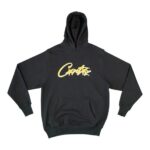In today’s digital world, where everyone has a camera in their pocket, high-quality photo printing remains a thriving industry. If you’re a photo lab owner, investing in a minilab printer can be a game-changer for your business. But what exactly is a minilab printer? How do they work? And how do you choose the right one for your needs? This comprehensive guide will answer all your questions and help you make informed decisions for your photo lab.
What Is a Minilab Printer?
A minilab printer (short for “mini laboratory”) is a compact, self-contained machine used for developing and printing photographs. Unlike traditional photo labs that require large equipment and complex chemical processes, minilab printers are streamlined, efficient, and designed for commercial environments with limited space.
These printers allow you to:
- Print photos in various sizes and formats
- Offer fast turnaround times
- Reduce operational costs
- Improve customer satisfaction with high-quality prints
There are two main types of minilab printers: wet minilabs and dry minilabs, which we’ll explore below.
Types of Minilab Printers
1. Wet Minilabs
Wet minilabs use traditional silver halide (AgX) photographic paper and chemical processing to develop images. This method has been around for decades and is known for:
- Rich, deep color reproduction
- Long-lasting prints
- Smooth gradation in skin tones and shadows
Popular wet minilab brands include Fujifilm Frontier and Noritsu QSS series. However, these systems require:
- Regular chemical maintenance
- Temperature control
- Ventilation systems
- Skilled technicians for operation
2. Dry Minilabs
Dry minilabs use inkjet or dye-sublimation technology to print photos without the need for chemicals. They are more environmentally friendly and easier to maintain than wet labs.
Key features:
- No chemicals or water required
- Compact and portable design
- Lower maintenance
- Ideal for retail outlets and small labs
Leading brands in dry minilab technology include Epson SureLab, DNP, and Noritsu Green series.
How Minilab Printers Work
Whether wet or dry, the core function of a minilab printer is to receive digital image data and convert it into a physical photo. Here’s how it works:
For Wet Minilabs:
- Image Processing: Digital files are color corrected and resized.
- Exposure: A laser or LED system exposes the image onto silver halide paper.
- Chemical Processing: The paper passes through a series of chemical baths (developer, bleach/fix, and wash).
- Drying and Cutting: The photo is dried and cut to the desired size.
For Dry Minilabs:
- Image Processing: Just like wet minilabs, images are prepared digitally.
- Printing: Ink or dye is transferred onto paper through thermal or inkjet technology.
- Cutting and Finishing: The printed image is cut and optionally laminated.
Key Features to Look For
When choosing a minilab printer, consider the following features to ensure it meets your business needs:
1. Print Speed
Faster printing speeds help you manage large volumes, especially during peak seasons. Look for models that offer quick output without compromising quality.
2. Print Sizes
Check if the printer supports multiple sizes (e.g., 4×6, 5×7, 8×10). Some high-end models even support panoramic prints and ID photos.
3. Print Resolution
Higher DPI (dots per inch) results in sharper images. A good benchmark is 300 DPI or above for lab-quality prints.
4. Connectivity & Software
Ensure the printer is compatible with your workflow:
- USB and Ethernet connectivity
- Integration with photo kiosks or ordering systems
- Built-in editing and cropping software
5. Consumables & Maintenance
Find out the availability and cost of consumables (ink, paper, chemicals). Dry minilabs generally have lower recurring costs and simpler maintenance schedules.
Top Minilab Printer Models in 2025
Here are some of the most popular and reliable models currently on the market:
| Brand & Model | Type | Key Features | Ideal For |
|---|---|---|---|
| Fujifilm Frontier DE100 | Dry | Compact, up to 1,800 prints/day | Small to medium labs |
| Noritsu QSS-3701 | Wet | High capacity, professional quality | High-volume labs |
| Epson SureLab D1070 | Dry | Inkjet, borderless printing | Retail photo booths |
| DNP DS620A | Dry | Dye-sub, fast speed, low cost | Events and photo studios |
| Noritsu Green II | Dry | Eco-friendly, high-quality prints | Eco-conscious labs |
Advantages of Owning a Minilab Printer
✅ Increased Profit Margins
Owning your own printer eliminates outsourcing costs and enables you to price competitively.
✅ Fast Turnaround
Customers expect same-day or instant photo printing. A minilab printer helps you deliver faster.
✅ Custom Services
You can offer personalized prints, photobooks, ID photos, and promotional products.
✅ Control Over Quality
Having full control over the printing process ensures consistent quality and customer satisfaction.
Common Challenges and Solutions
| Challenge | Solution |
|---|---|
| High initial investment | Start with a dry minilab; they’re more affordable and scalable. |
| Chemical handling (wet labs) | Hire trained staff and ensure proper ventilation. |
| Print head clogging (dry labs) | Regular use and maintenance prevent clogs. |
| Limited paper stock | Keep a variety of sizes and finishes in inventory. |
Maintenance Tips for Longevity
Proper maintenance can extend the life of your minilab printer by several years. Here are some tips:
- Clean rollers and print heads weekly
- Replace consumables as per the manufacturer’s guidelines
- Keep the printer in a dust-free, temperature-controlled environment
- Run diagnostic tools regularly
- For wet minilabs, monitor chemical levels and clean tanks
Is a Minilab Printer Right for You?
Before investing, ask yourself:
- Do I have enough daily print volume to justify the cost?
- Am I ready to handle maintenance or hire someone who can?
- Will the printer add value to my existing services?
If the answer is yes, then a minilab printer is a smart investment that can open new revenue streams.
Conclusion
Minilab printers are a powerful tool for photo lab owners who want to scale their business, improve quality, and serve customers faster. Whether you go for a traditional wet lab or a modern dry minilab, the key is to align your choice with your business goals, budget, and operational capacity.
With this guide, you now have the knowledge to choose the right printer, understand how it works, and make the most out of your photo printing services. Happy printing!
Let me know if you’d like this turned into a downloadable file or translated into another language!



